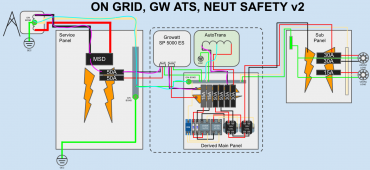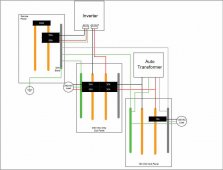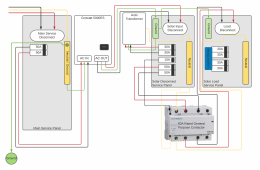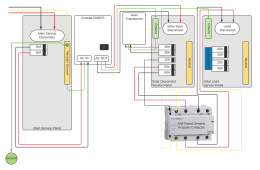??????
New Member
- Joined
- Sep 25, 2021
- Messages
- 57
Thanks folks for the feedback - @Desert_AIP I think the situation @LeRoyK proposes does have a current path, but I do agree that L1&L2 ground faults would be clearable on either panel. Here are the fault scenarios I can think of that don't involve loss of conductors (note: fault scenario #3 below is depicted in the attached diagram, with L1 highlighted in pink and N highlighted in bright blue):

- Service panel: L1 fault to GND is cleared by double-pole 50A CB in service panel via service panel G/N bond via grid transformer
- Service panel: L2 fault to GND is cleared by double-pole 50A CB in service panel via service panel G/N bond via grid transformer
- Derived main panel: L1 fault to GND is cleared first by 30A CB in derived main panel via derived main panel G/N bond and grid neutral connection to grid transformer. If 30A CB in derived main panel fails, 50A CB in service panel backs this OCPD up
- Derived main panel: L2 fault to GND is cleared first by 30A CB in derived main panel via derived main panel G/N bond and grid neutral connection to grid transformer. If 30A CB in derived main panel fails, 50A CB in service panel backs this OCPD up







